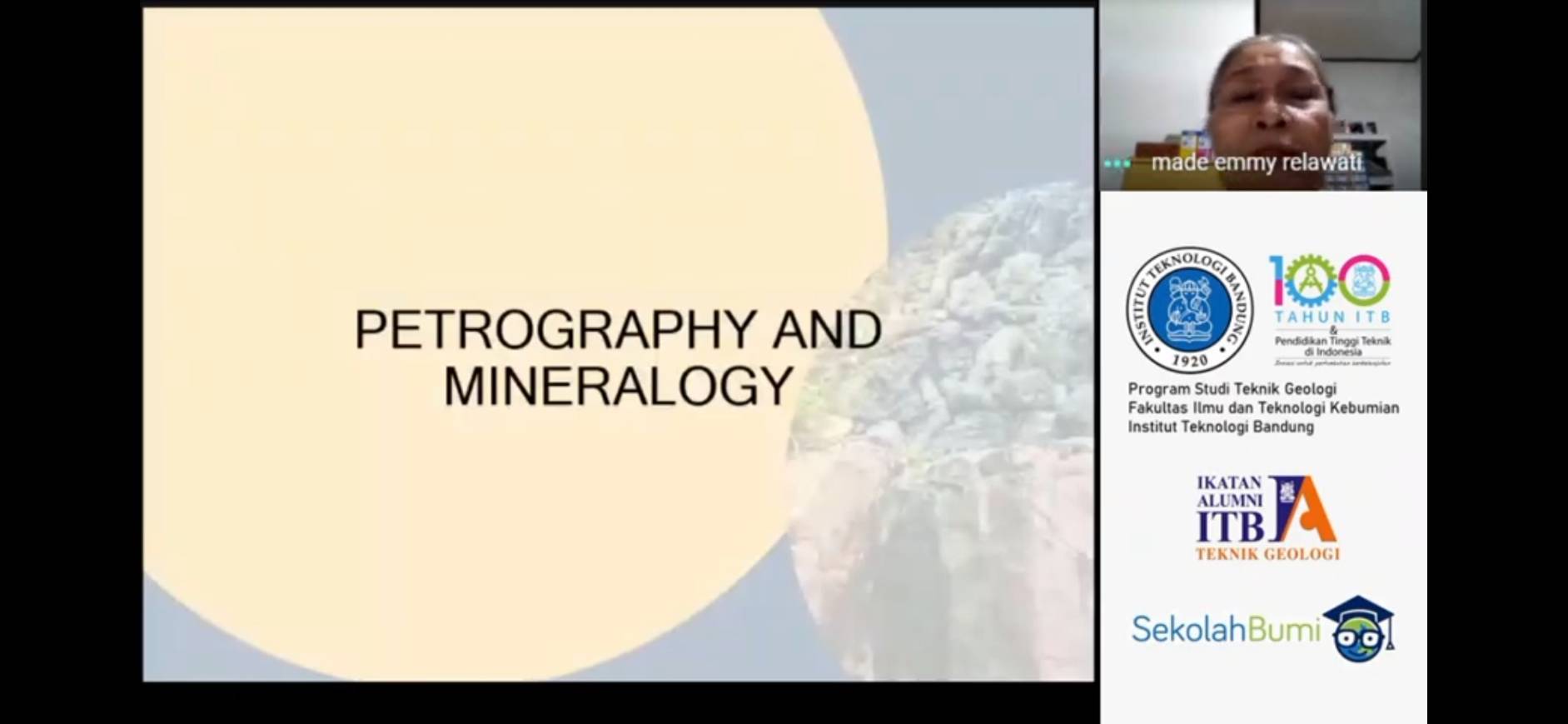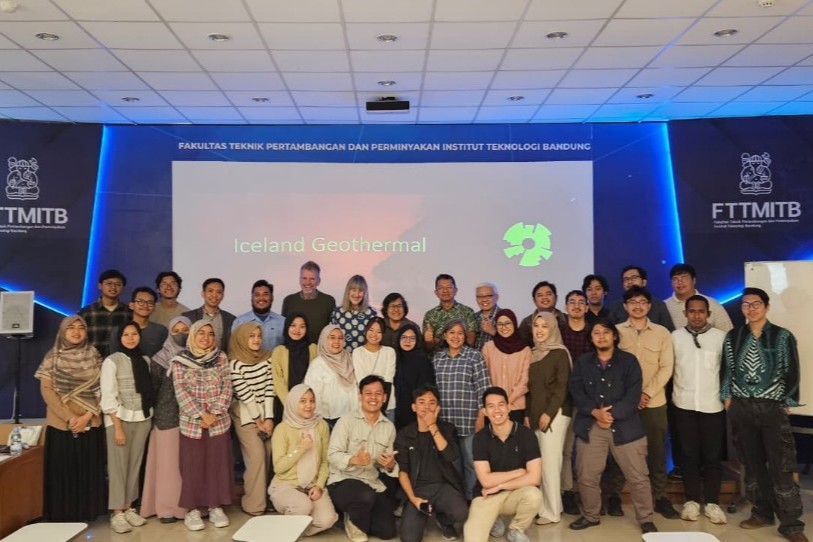ITB Geology: "Ophiolite, An Earth’s Oceanic Crust that Has Been Uplifted"
By Adi Permana
Editor Adi Permana
 screenshot of the webinar
screenshot of the webinar
BANDUNG, itb.ac.id – Geological Engineering Department, FITB ITB held a webinar titled "Ophiolite, Earth’s oceanic crust that has been uplifted" on Saturday, May 16, 2020. The speaker of this webinar was Prof. Dr. Emmy Suparka, moderated by Dr. Eng. Mirzam Abdurrachman. Geologi Menyapa is a fundraising event for COVID-19. Collected funds will be channeled through ITB COVID-19 Task Force, as confirmed by Dean of FITB, Prof. Benyamin Sapiie Ph.D.
*
Mirzam said, fundraising is not only reason why Geologi Menyapa exists, but also as an education forum from experienced geologists. "Geologi Menyapa is open for public so they can learn something, especially in geology, from us. Also, this webinar is a media for alumni to keep in touch with their lecturers and relatives." said Dr. Mirzam.
Geological Engineering Departement is running this weekly webinar, supported by Faculty of Earth Sciences and Technology, ITB Alumni Association (IA-ITB), and Geological Engineering Alumni Association (IA-GL).
Introduction to Ophiolite
Prof. Emmy stated that earth science is one of important subject to learn in geological engineering. Therefore, ophiolite is an interesting object to be observed. Ophiolites are remnants of ancient oceanic crusts and upper mantles that are displaced or placed tectonically on the edge of continents with a maximum age of 170 million years. "Ophiolites are an assemblage of mafic-ultramafic rocks," she explained.
Ophiolite is from Greek word ophis and lithos which means snake stone. Ophiolites can be found in Indonesia such as Karangsambung, Ciletuh, Bayat, Bantimala, Meratus, and Timor. Based on tectonic order classification, some ophiolites are formed in MOR (Mid Ocean Ridge / Divergent Plant Boundaries) as lersolit and some are formed in the Supra Subduction Zone (SSZ) or archipelago arcs from marginal basins.
Prof. Emmy continued, opiolites can metallic and non-metallic mineral deposits such as gold and silver which are categorized as precious metals. For other heavy metals, there are iron, chromite, nickel and platinum groups which are categorized as heavy metals. Also. jade and asbestos are categorized as non-metallic minerals. "There are iron, chromite, nickel, and platinum that considered as heavy metals. Deposits of metallic and non-metallic minerals are certainly beneficial in various aspects both for industrial needs or social economy impact,” she said.
At the end of session, Prof. Emmy concluded several important things about ophiolites; A set of rocks consisting of harzburgite, lersolite, gabbro (cumulative and non-cumulative), diabas, and pillow lava. Magma type that formed in ophiolites is categorized as class II magma according to Miyashiro in 1985.
Reporter : Diah Rachmawati
Translator : Billy Akbar Prabowo

.jpg)

.jpg)
.jpg)
.jpg)
